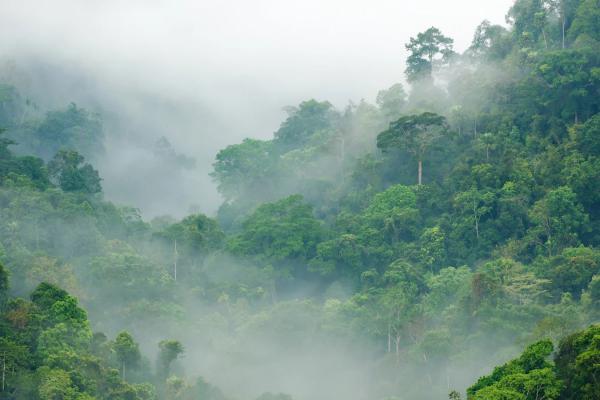Critical transitions in Amazon Forest may affect water supplies
22 Feb 2024 by The Water Diplomat

In an article published in the influential magazine Nature on the 14th of February, a group of 25 researchers have warned that up to 47% of the Amazon Forest is unstable and could reach a tipping point if not further protected, with consequences for water supplies across the region. The researchers analysed the existing evidence for five major drivers of water stress in the Amazon basin. The Amazon Forest is a complex system of interconnected species, ecosystems and human cultures that provide important services for life on earth and as well for humanity. In water terms, the forest acts as a so called ‘atmospheric pump’, contributing 50% of the rainfall in the region as well as being crucial for moisture supply across South America. The forest also supplies water and moisture beyond its own limits, through river flow and rainfall supplied to more arid regions such as the Pantanal Wetlands and the La Plata River Basin.
In addition to its importance for water systems across South America, the forest also holds a large part of the earth’s (land based) biodiversity, it stores the carbon equivalent of 15-20 years of global emissions, and it has a powerful cooling effect on the global climate.
Although the Amazon Forest has remained essentially stable for the last 65 million years, unfortunately, currently, large parts of the Forest are exposed to the risk of collapse due to the dual influences of climate change and land use changes. There is evidence that the resilience of the forest – its ability to withstand change - has been declining since the early 2000’s. The forest is a very complex and varied ecosystem with different kinds of internal feedback loops which occur in response to changes. When a complex environment like this is exposed to a number of different kinds of stresses, it is difficult to pinpoint accurately what the overall outcome will be. Knowing that the Amazon is exposed to a number of ‘new’ stresses caused by human activity, the researchers analysed a range of new conditions to which the forest is exposed, with a focus on the risks of ‘critical transitions’. Critical transitions are transitions whereby the ecosystem crosses a critical threshold or ‘tipping point’ at which even small changes in the system can lead to abrupt shifts in the system. Across the Amazon, five drivers of water stress are identified by the authors.
The first driver of water stress is climate change. Global warming is expected to change the rainfall patterns in the Amazon, with the eastern and southern stretches of the forest experiencing more seasonal rainfall. Different scenario’s predict that droughts in the Amazon region will increase in length and intensity, and that exceptionally hot droughts will become more common. The number of dry days in a year is expected to increase by between 10-30 days by 2050 depending on the pattern of our greenhouse gas emissions. The average temperature in the region has increased by 0,27°C per decade since 1980, creating thermal stress for plants and reducing annual rainfall by up to 20mm per year.
The second driver of water stress is annual rainfall. Large parts of the rainforest thrive at high levels of rainfall, and there is evidence to suggest that if rainfall drops below 1,000mm per year, forests are more likely to collapse if they are disturbed than if they have sufficient moisture. Lower down in the floodplains, this threshold is lower, as these trees require 1,500 mm per year to remain in a stable condition.
A third driver of water stress is the seasonality of rainfall: trees thrive when there is less variation in rainfall between seasons. There are indications that if the inter-seasonal rainfall gap increases beyond 400 mm, forests are more likely to collapse when severely disturbed than forests where the inter-seasonal shortfall of water is less intense.
Fourth, the length of the dry season is a driver of water stress: the forest remains relatively healthy with a dry season that lasts up to 7 months. However, beyond 7 months, the forests are again more vulnerable to collapse if disturbed.
A fifth driver of water stress is deforestation itself. The critical threshold is estimated to be at around 20% accumulated deforestation, whereby the forest becomes unstable if more than one fifth has been removed. Beyond 20% deforestation, there is evidence of accelerated mortality, causing large reductions in regional rainfall and a fundamental change in the forest itself.
In conclusion, the authors note that the resilience of the Amazon Forest is being affected by a number of mutually reinforcing disturbances. Most models agree that a large scale collapse of the forest is unlikely in the 21st century. However, there are real dangers that different disturbances will interact and have quite severe impacts which can trigger unexpected ecosystem transitions. Therefore, we must take actions that contribute to maintain the Amazon forest within safe boundaries. At the global level this implies taking action to stop greenhouse gas emissions. Locally, strong action is needed to stop deforestation and forest degradation, as well as to promote forest restoration in degraded areas.
